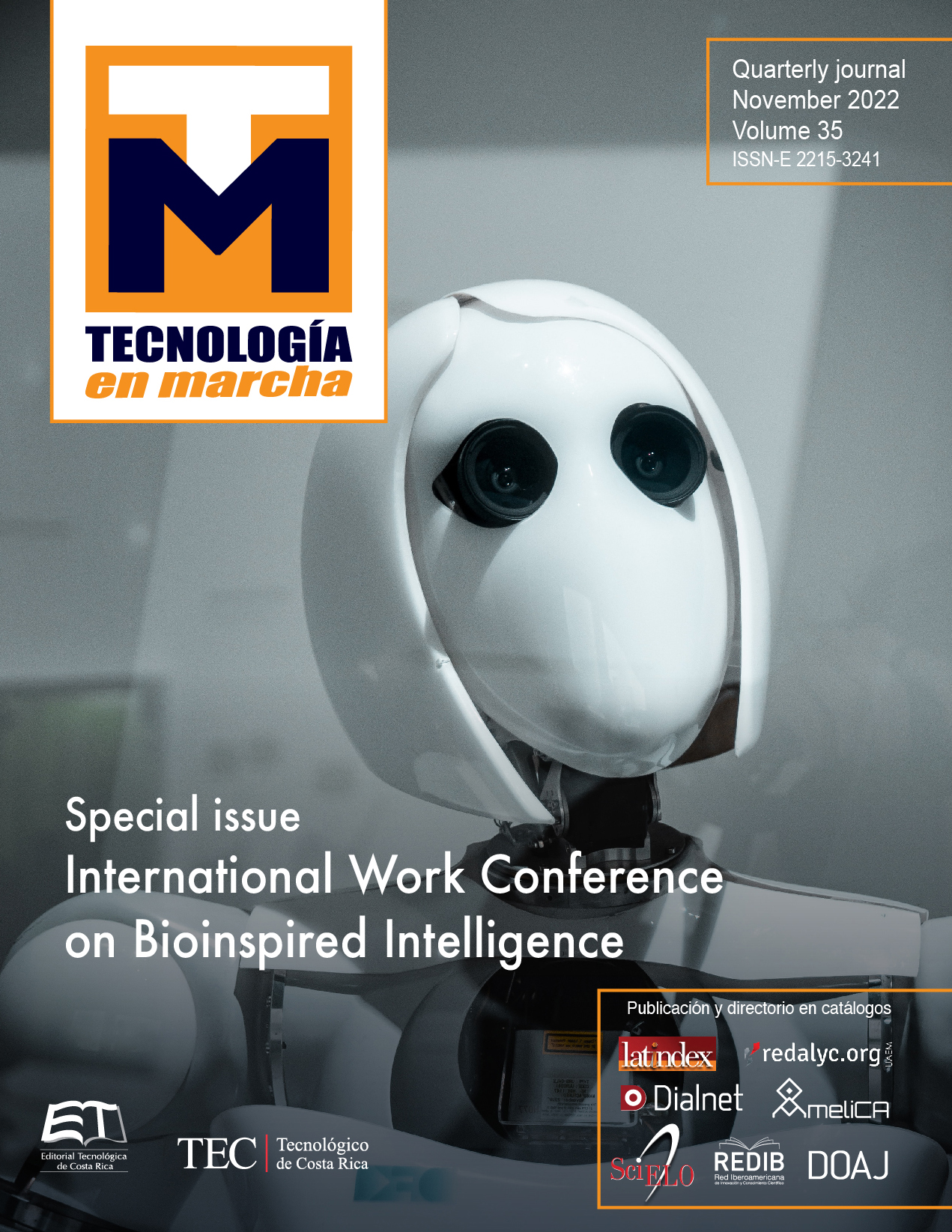Two-dimensional gel electrophoresis image analysis of two Pseudomonas aeruginosa clones
Main Article Content
Abstract
A classical strategy to analyse the protein content of a biological sample is the two-dimensional gel electrophoresis (2D-GE). This technique separates proteins by both isoelectric point and molecular weight, and images are taken for subsequent analyses. However, analyses of 2D-GE images require standardized image analysis due to susceptibility of gels to get deformed, presence of overlapping spots and stripes, fuzzy and unstained spots, and others. This represent a difficulty for final users (researchers), which demand for free and user-friendly solutions. We have previously reported the standardization of a protocol to analyse 2D-GE images, and in the current study we applied it to two new bacterial isolates Pseudomonas aeruginosa C25 and C50. We first extracted periplasmic proteins after exposure to antibiotics, and we then run a 2D-GE analysis. Images were analysed using our standardized protocol, achieving the identification of protein spots using CellProfiler after pre-processing step. Comparison between strains was done using differential spot analysis, revealing a specific pattern in the protein expression between bacteria. These results will help to study the biological meaning of these strains using proteomic profiling under different conditions.
Article Details

This work is licensed under a Creative Commons Attribution-NonCommercial-NoDerivatives 4.0 International License.
Los autores conservan los derechos de autor y ceden a la revista el derecho de la primera publicación y pueda editarlo, reproducirlo, distribuirlo, exhibirlo y comunicarlo en el país y en el extranjero mediante medios impresos y electrónicos. Asimismo, asumen el compromiso sobre cualquier litigio o reclamación relacionada con derechos de propiedad intelectual, exonerando de responsabilidad a la Editorial Tecnológica de Costa Rica. Además, se establece que los autores pueden realizar otros acuerdos contractuales independientes y adicionales para la distribución no exclusiva de la versión del artículo publicado en esta revista (p. ej., incluirlo en un repositorio institucional o publicarlo en un libro) siempre que indiquen claramente que el trabajo se publicó por primera vez en esta revista.
References
M. M. Goez, M. C. Torres-Madroñero, S. Röthlisberger, and E. Delgado-Trejos, “Preprocessing of 2-Dimensional Gel Electrophoresis Images Applied to Proteomic Analysis: A Review.,” Genomics. Proteomics Bioinformatics, vol. 16, no. 1, pp. 63–72, 2018.
P. H. O’Farrell, “High resolution two-dimensional electrophoresis of proteins.,” J. Biol. Chem., vol. 250, no. 10, pp. 4007–21, May 1975.
M. Natale, B. Maresca, P. Abrescia, and E. M. Bucci, “Image analysis workflow for 2-D electrophoresis gels based on imageJ,” Proteomics Insights, vol. 4, pp. 37–49, 2011.
T. S. Silva, N. Richard, J. P. Dias, and P. M. Rodrigues, “Data visualization and feature selection methods in gel-based proteomics.,” Curr. Protein Pept. Sci., vol. 15, no. 1, pp. 4–22, Feb. 2014.
J. A. Molina-Mora, D. Chinchilla-Montero, C. Castro-Peña, and F. Garcia, “Two-dimensional gel electrophoresis (2D-GE) image analysis based on CellProfiler,” Medicine., vol. IN-PRESS, 2020.
R. T. Cirz, B. M. O’Neill, J. A. Hammond, S. R. Head, and F. E. Romesberg, “Defining the Pseudomonas aeruginosa SOS response and its role in the global response to the antibiotic ciprofloxacin,” J. Bacteriol., vol. 188, no. 20, pp. 7101–7110, Oct. 2006.
G. F. Ames, C. Prody, and S. Kustu, “Simple, rapid, and quantitative release of periplasmic proteins by chloroform.,” J. Bacteriol., vol. 160, no. 3, pp. 1181–3, Dec. 1984.
I. Arganda-Carreras, C. O. S. Sorzano, J. Kybic, and C. Ortiz-de-solorzano, “bUnwarpJ : Consistent and Elastic Registration in ImageJ . Methods and Applications .,” Image (Rochester, N.Y.), 2006.

